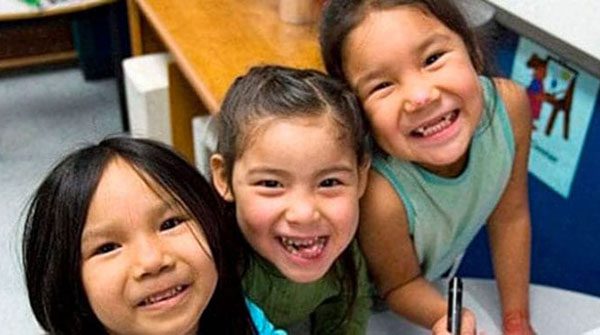The future of Indigenous policy requires emerging from the shadow of the Indian Act
 Reflecting on the evolution of federal policy, it should be obvious in the third decade of the 21st century that one significant mistake made by the federal government in history to federalize every issue involving Indigenous peoples.
Reflecting on the evolution of federal policy, it should be obvious in the third decade of the 21st century that one significant mistake made by the federal government in history to federalize every issue involving Indigenous peoples.
For better or worse, the British set out on the federalizing policy path starting with the Royal Proclamation of 1763. That determined that indigenous inhabitants of this land would be treated as collectives and negotiated with through signed treaties that set out rights and responsibilities. From the start, though, it was the central government, and it alone, that dealt with First Nation communities.
As with most top-down approaches that exist far from local conditions, Indigenous policy in Ottawa became rigid and inflexible in meeting changing needs and circumstances. Not only this, but post-Confederation, the Indian Act did not keep up with the rapidly evolving changes taking place in Canada.
 |
| Related Stories |
| The national chief of the AFN has been ousted. Now what?
|
| Indian Act again under attack
|
| 1889 book provides a way forward for Aboriginal policy today
|
For example, as provinces began to create education and health care systems, First Nations on reserve found themselves islands of federal jurisdiction within the provinces. Programs and services delivered by local or provincial governments to other Canadians were instead delivered by distant federal civil servants to First Nations.
Whereas provinces could tailor policies to suit their populations, Indigenous people had to contend with an inflexible federal Indian Act regime that denied them full access to their own lands and required them to sign off with far-away Ottawa on most aspects of public life.
In the 21st century, First Nations people on reserves find themselves facing the same problems they dealt with at Confederation: an inflexible federal regime that demands oversight for basic economic transactions, band governance more accountable to the federal government than its own membership, and land restrictions that were intended to protect the indigenous land base but that now prevent indigenous entrepreneurs and governments from accessing capital.
In other words, First Nations still have 19th-century tools in a 21st-century world, which explains the slow progress out of poverty on many reserves.
Still, there are signs of an economic spring. First Nations have changed in recent decades because a growing urban middle class formed from members exposed to how the rest of Canada lives. They support certain constitutional rights for their communities but are much more open to voluntary change and want democratic governance and prosperity.
As a journalist and indigenous policy analyst for over 15 years, I have witnessed and documented this shift within the indigenous populace. In addition, indigenous leaders who have galvanized indigenous support for change and challenge the so-called Aboriginal orthodoxy have emerged.
British Columbia indigenous businessman and lawyer Calvin Helin, whose 2008 book Dances with Dependency documented the problems of dependency within First Nations communities, is one example. So too reformist political leaders such as Kamloops Chief Manny Jules, Chief Clarence Louie of the Osoyoos Indian Band, and Ellis Ross, now a Liberal member of the British Columbia legislature but who was previously the elected chief councillor for the Haisla First Nation on the coast of British Columbia. It was Ross who, in attracting natural gas investment to that territory, was the main force behind its drive from poverty to prosperity.
The best way to understand the dynamic now underway in Indigenous Canada is a 2022 observation from Financial Post columnist Diane Francis. Francis wrote of how Indigenous peoples in Canada were undergoing a “Quiet Revolution.” This was a reference to the period in Quebec’s history when that province, and the society therein, underwent profound social and political upheaval, including calls for modernization.
This is why First Nations people thus have both a choice and a chance. They seek the same good life and avenues as other Canadians, despite any rhetoric to the contrary: greater opportunity for themselves and their children and honest, transparent governance in their communities. Although most are committed to addressing past struggles, such as unresolved land claims and recognition of indigenous rights – no easy task given different views about what those terms mean – many are more concerned about economic independence for their communities and jobs for themselves and their family members.
One frank truth must be acknowledged: The real division in the 21st century is not necessarily between “indigenous” and “settlers,” as many vested interests, too many academics, and some indigenous ideologues claim. Instead, the division is between middle-class, pro-reform Indigenous leaders, grassroots Indigenous peoples, and businesspeople versus the Indigenous political organizations and scholars who are overly invested in the status quo, including reflexive, unproductive activism.
That status quo includes an attachment to ongoing government-granted preferences, including, ironically, for the continued isolation of indigenous peoples, but this time justified with reference to protecting an assumed “pure” culture.
This opposition to needed change is why reformists in government and elsewhere must find common cause with the indigenous reformist voices who are already pushing for change, and marginalize those too invested in the status quo.
Joseph Quesnel is a writer and researcher based in Nova Scotia and a senior fellow with the Aristotle Foundation. This chapter excerpt is from the Aristotle Foundation’s new book, The 1867 Project: Why Canada Should be Cherished – Not Cancelled, edited by Mark Milke.
For interview requests, click here.
The opinions expressed by our columnists and contributors are theirs alone and do not inherently or expressly reflect the views of our publication.
© Troy Media
Troy Media is an editorial content provider to media outlets and its own hosted community news outlets across Canada.


